Andrea Dowd
Andrea Dowd has been a practicing Athletic Therapist for 13 years. She owns Precision Sports Therapy INC in Calgary. Andrea focuses on manual therapy techniques and is a huge proponent of “ getting you back to it”, whatever that maybe. She focuses on putting you back together and then giving you the appropriate exercises to ensure you never have to go through the “injury and pain” again. If you would like to learn more about her you can visit her website precisionst.ca.
Are you an avid runner, hiker or cyclist? Have you been working from home during COVID, and sitting more than usual? Did you wake up one morning and suddenly your knee hurts?
While running, hiking and biking are all different sports, they all have one thing in common, they require sagittal plane movement (bending and straightening of the hips, and knees). We all love our specific sports, and when we only train in these sports, we don’t consider the effects this can have on our musculoskeletal system.
The repetitive movements of a sagittal plane sport i.e., bending at the hip, knees bending and straightening during running, hiking, and cycling, and not to mention the increased time sitting in front of a computer, can all lead to tight hips. So, you may ask, why would tight hips affect my knee pain? Have you ever heard of the term “Diminished Gluteal Syndrome”? Diminished Gluteal Syndrome basically is a medical term used to say that you have a flat bum; the butt needs to control hip stability, and the gluteal muscles, the powerhouse of our lower body, are responsible for this. The gluteal muscles responsible for stabilizing the hips, and in turn keeping the knee from caving in, are the Gluteus Maximus and Gluteus Medius muscles.
The following is how hip stability and knee pain are interconnected:
- The Gluteus Medius is responsible for stabilizing the pelvis and not letting your knee cave in. If the muscle is weak, then you will feel pain on the inside of the knee.
- A tight Tensor Fasciae Latae (TFL), a muscle of the thigh, could also hinder the Gluteus Medius from working properly causing the knee to cave inwards.
- “Sitting on your butt”, sitting causes your hamstrings to be tight, and in turn it affects the Gluteus Maximus activation, pulling the hips up or down
- Lack of Gluteus Medius and Gluteus Maximus strength can cause the hips to be unstable, causing a leg length discrepancy i.e., one leg longer than the other, which in turn causes pain in the overall area of the knee.
- Tight hips cause lack of hip extension i.e., when your foot passes under your hip, when you lack hip extension during hiking and running you become a quad-dominant runner, and therefore the quads are more active and become tight. Pain will be above or below the kneecap.
You see, the knee is in the middle of the hip and foot, generally the knee is along for the ride and if there wasn’t a traumatic event causing the knee injury, you should look to the hip and the gluteal muscles as the culprit for your knee pain.
4 exercises to help activate the gluteal muscles
TFL exercise
Trigger point release with a lacrosse ball
Important, releasing the TFL will help get better gluteal activation
Duration: 30 secs each side
- Find the TFL – the muscle is located under the hip
- Lie on your stomach and place the lacrosse ball where the muscle is
- Move up and down, side to side on the muscle
Gluteal exercises
Gluteal Frog
Duration: 3 sets of 10
- Lie on your back with the bottom of your feet together
- Place your exercise band around knees, your knees should be upright
- Keeping your hips level, drop one knee to the ground and then alternate to the other side
Glute Bridge with external rotation of your knees
Duration: 3 sets of 10
- Lie on your back with your knees bent and your exercise band around your knees
- Go up into a glute bridge
- Place your hands under your hips to monitor hip movement
- Keeping your hips level (do not drop the hips), rotate knees out away from the body and back
Gluteus Medius wall pushes
Duration: 1 set of 10 per side; hold for 10 seconds each
- Lie on your stomach close to the wall, keeping your hips level on the floor
- Lift up the leg closest to the wall and push your ankle/foot into the wall sideways (you should feel the side of your butt become firm
- Hold this position for 10 secs
If you would like to see more exercises to relieve knee pain or tight hips, check out the video below.


2 thoughts on “Why do I have knee pain? Is it actually coming from my knee?”
Thank you Andrea, these exercises are very effective, thanks for your help!
Thanks for your comment! We are so glad you found these tips helpful.